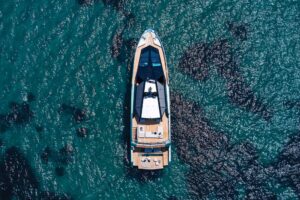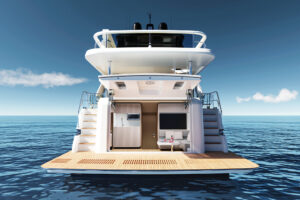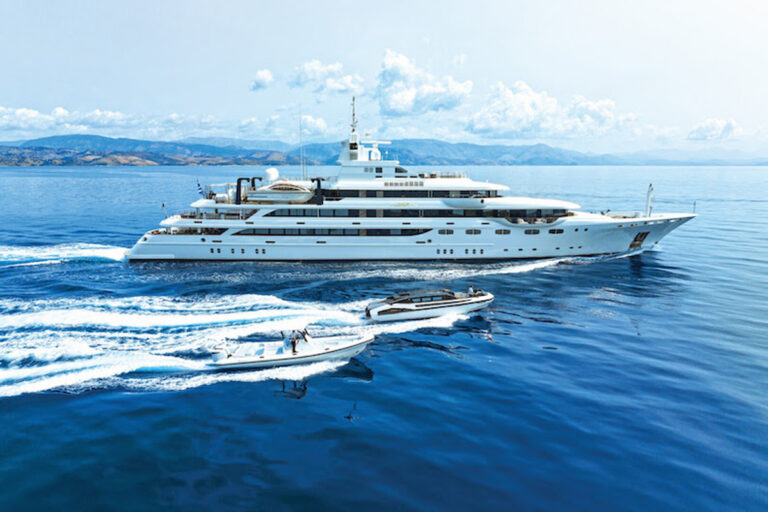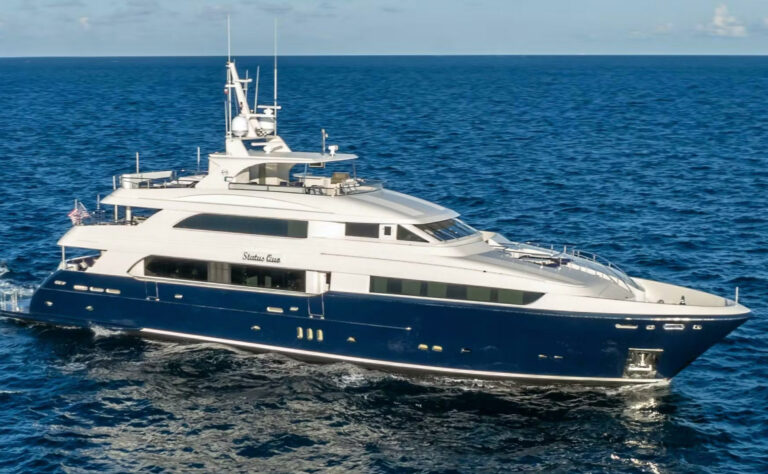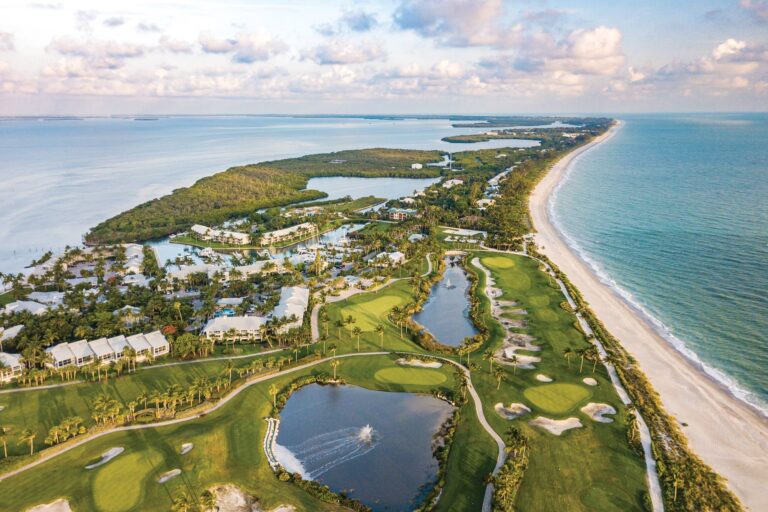The Mikelson Yachts brand may not roll off the tongue of the average East Coast marine maven, however, the long-range sportfishers Dick Peterson and Pat Sullivan have been building since 1984 have earned a loyal following west of the Mississippi. Teaming with designer Tom Fexas, the Californians offer a line of yachts that makes sense on either shore. The new Mikelson 70 is typical of the marque. In fact, my test boat was being prepared for an East Coast delivery.
Hard-core convertible types might be tempted to cast sportfishers like the 70 as cockpit motoryachts, but this is not the case. Such designs are ideally suited for their mission, which often includes extended expeditions to remote fishing grounds south of the border. Fishing and cruising are valued equally in this market, and the 70’s design successfully addresses both.
As is common of Fexas’ work, the 70’s styling is not so easily pigeonholed. She has the attributes of a traditional left coast sportfisher, but is not quite so conservative. While she lacks the complex, swollen, sweeping shapes that are popular on European imports, her styling will easily tease those bored with the mainstream.
Fexas has carved his niche in yacht design with a unique stroke, and to the knowledgeable eye, the 70 bears his signature. His slender, fuel-miser Midnight Lace designs most likely come to mind. Where a length/beam ratio of 4.0 is typical of the Midnight Lace, the 70’s length/beam ratio of 3.5 is quite competitive with other yachts in her class.
“The Midnight Lace has what we refer to as a penetrating hull form, a bit like the early commuter yachts, Fexas said. “I suppose the 70 is a penetrating-planing hull, a bit beamier with a full planing surface aft.
The 70’s forward sections are convex, and her stem evolves into what Fexas calls a “hydrofoil keel. Instead of being simply an afterthought, the keel fairs cleanly into the hull and aids in the transition from the deeper forward sections to an efficient planing surface aft. This leaves the outboard buttock lines almost parallel to the chine aft. Subtle longitudinal ledges highlight slight changes in deadrise, and a soft bilge forward transitions into a hard chine aft. East Coast yachtsmen will benefit from the 70’s shallow propeller tunnels, which trim draft to 5 feet-the maximum, in my opinion, for cruising the Intracoastal Waterway or the Bahamas comfortably.
Our test boat was fitted with 1,400 hp Caterpillar 3412Es. While Mikelson is not locked into this particular engine package, it seemed an ideal choice during my test. I recorded a maximum speed of 29.5 knots at 2320 rpm and 26.3 knots at 2100 rpm. At 1800 rpm, she cruised comfortably at 21.7 knots, and her Caterpillar electronics indicated 51 percent load and a fuel burn of 72 gallons per hour.
While trim tabs are fitted, they are only necessary for minor athwartships adjustments. When given throttle, the 70 rises evenly to maximum speed in a bit more than 30 seconds. Advancing the throttles overzealously did result in a bit of vibration. Some prop tweaking is called for, and Mikelson’s data indicate a couple more knots might be had.
While she moves through the water gracefully at speed and banks neatly in turns, I would suggest opting for power steering-a feature I expect on a boat of this size and speed.
Our test boat’s air-conditioned flying bridge was enclosed with acrylic glazing. The view was excellent, and the Stidd helm and companion seating was hearty and comfortable. The helm console easily accommodated a full complement of electronics, and I was pleased to find a spot for laying out a chart.
A semicircular lounge nearby seats six, and there is a refrigerator with ice maker. A second station aft on the flying bridge deck is closer to the action and allows a view of the transom. A bench seat there has a swing back for fore/aft seating. Our test boat also had cockpit controls and a tower station.
The “lanai deck, as Mikelson calls the afterdeck forward of the cockpit, measures 90 square feet. Its seating area offers a comfortable view of the cockpit. An exterior day head allows fishermen to make a pit stop without wandering through the interior.
Steps to port and starboard lead to the cockpit, which has a tackle center, a refrigerator, a freezer, a barbecue and space for a full-size fighting chair. The transom has an integral live well with viewing ports and a one-piece door. The cockpit sole can be finished in nonslip or teak, and has two fish/stowage boxes with removable liners.
The 70’s interior has more volume than I expected for a yacht her size. This is largely due to Fexas’ clever split-level main cabin arrangement. The saloon is aft, with a few steps up to the galley/dinette area forward. This allows room belowdecks for a full-beam master stateroom with a walk-in hanging locker and a head with a stall shower. A guest stateroom with a private head benefits from the raised trunk and is almost as large as the master. The forward stateroom has overlapping V-berths and a private head. Two crew cabins and a head with a separate shower are abaft the engineroom and accessible from the cockpit.
Built in Taiwan, the 70’s hull and superstructure are a blend of handlaid, stitched multidirectional reinforcements and foam coring. Exterior surfaces are finished in gelcoat, and the hull bottom is coated with epoxy to help reduce the chance of blistering. Fiberglass longitudinal stringers run the length of the hull and are supported by marine plywood bulkheads that are fiberglassed in place. Fiberglass fuel tankage is independent of the hull structure.
Access to the engineroom is from the cockpit, through the crew quarters. Service points on the Caterpillars appear to be within easy reach, and systems seem logically organized. I was pleased to note an emergency tiller secured to the bulkhead. Keyed to the top of the rudderpost, the stainless-steel pipe can be used during a steering system failure.
Two 27.5kW generators are in the machinery room/lazarette beneath the cockpit, accessible via a hatch or a door from the crew quarters.
West Coast-inspired designs such as the Mikelson 70 will continue to gain appeal beyond the region. They offer performance in uniquely American dress and satisfy the needs of serious fishermen and cruising yachtsmen. East Coast anglers who wander to Mexico and beyond, or cruise the Bahamas for extended periods, should take note of this new yacht.
Contact: Mikelson Yachts, Inc., (619) 222-5007; www.mikelsonyachts.com.

